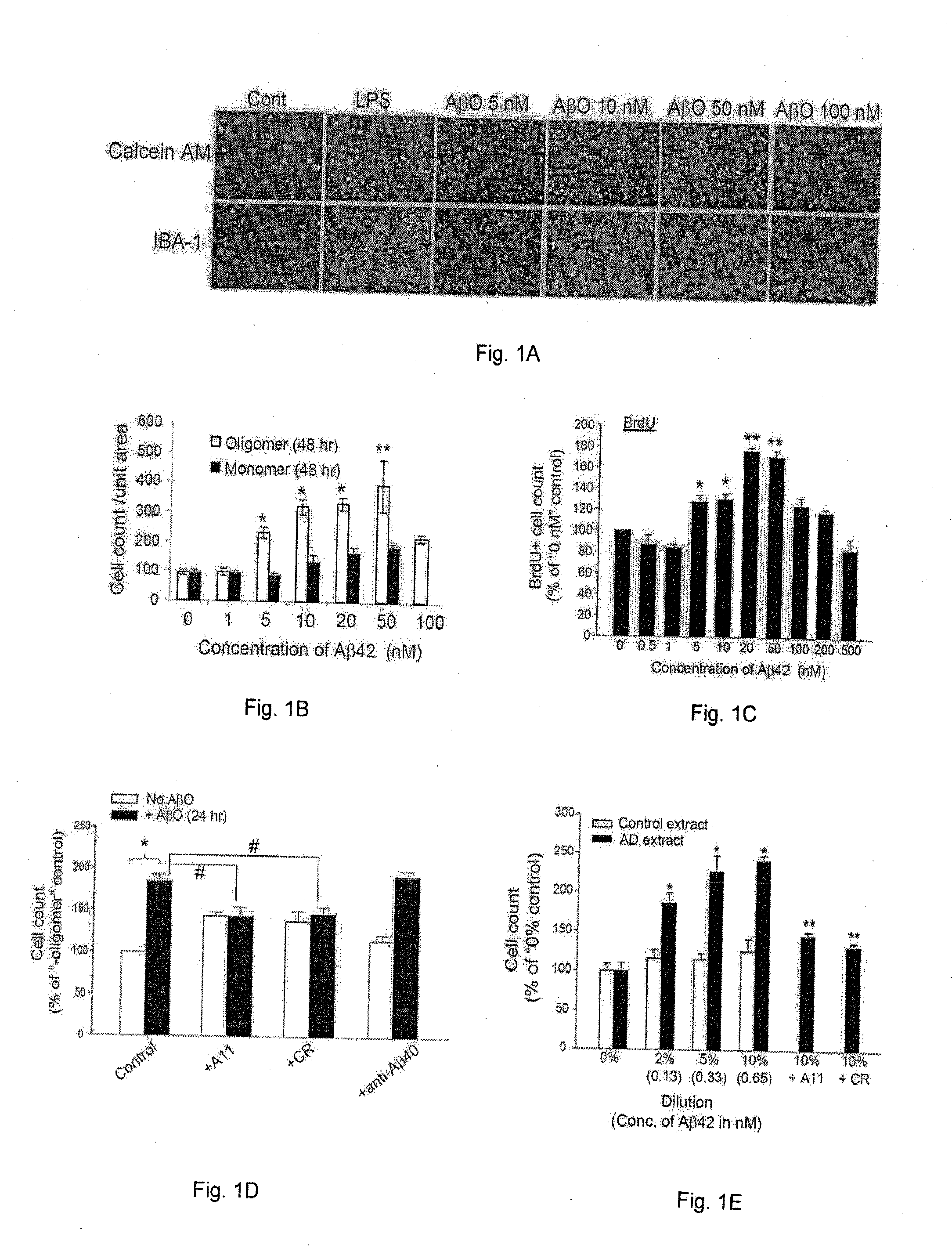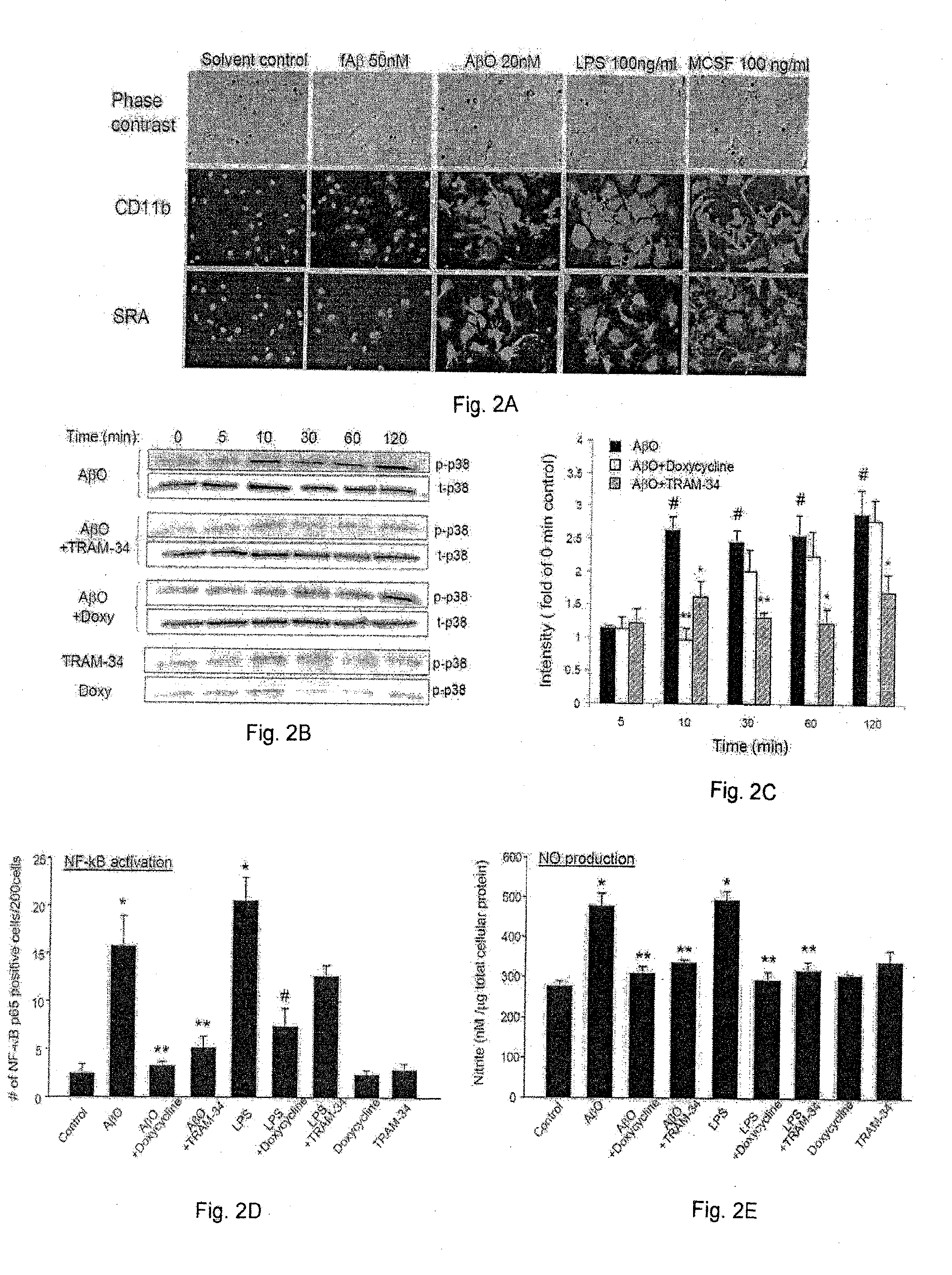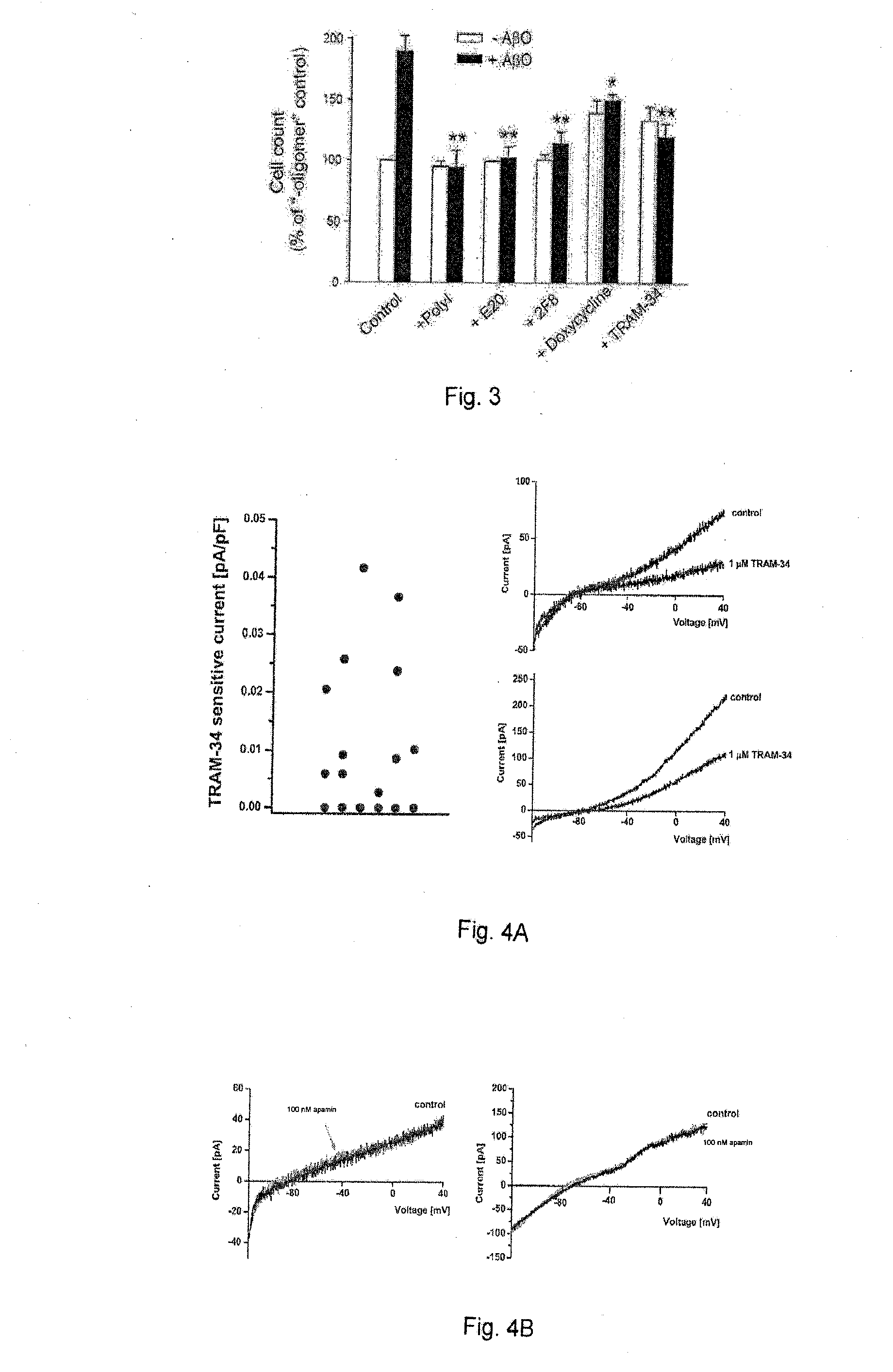Reduction of Microglia-Mediated Neurotoxicity by KCa3.1 Inhibition
a microglia and inhibitor technology, applied in biocide, organic chemistry, drug compositions, etc., can solve the problems of reducing neuron-damaging effects, prevent the beneficial effects of microglia, reduce the neurotoxic effect of microglia, and slow down the damage of neuronal cells
- Summary
- Abstract
- Description
- Claims
- Application Information
AI Technical Summary
Benefits of technology
Problems solved by technology
Method used
Image
Examples
example 1
Selective Reduction of Microglia-Medicated Neuroinflammation in AD by Inhibition KCa3.1
[0041]To examine microglia activators that are pathologically relevant to the early stage of AD development, Applicants investigated the ability of low levels of Aβ oligomers (AβO) to activate microglia and discovered, in the course of such work, that AβO can activate microglia at concentrations in the range of 5-50 nM. Such low concentrations of AβO are usually not sufficient to cause direct neurotoxicity. This effect follows a bell-shaped dose-response curve and tapers off at concentrations above 100 nM. Furthermore, Applicants have determined that AβO-activated microglia release soluble neurotoxic substances that cause neuronal damage, and this mode of microglia activation and neurotoxicity is dependent on microglial KCa3.1. This indicates that neuroinflammation mediated by microglia is a significant contributor to early AD pathogenesis when Aβ starts to accumulate in brain prior to fAβ deposit...
example 2
Neuroprotection Following Ischemic, Annoxic or Hypoxic Event by Inhibition KCa3.1
[0100]Microglia and brain infiltrating macrophages significantly contribute to the secondary inflammatory damage in the wake of ischemic stroke. The following is an example, which demonstrates that inhibition of KCa3.1 (IKCal / KCNN4) reduces microglia and macrophage activation.
[0101]Using an HPLC / MS assay, Applicants first confirmed that our small molecule KCa3.1 blocker TRAM-34 effectively penetrates into the brain and achieves micromolar plasma and brain concentrations following intraperitoneal (i.p.) injection. Applicants then subjected male Wistar rats to 90 min of middle cerebral artery occlusion (MCAO) and administered either vehicle or TRAM-34 (10 or 40 mg / kg i.p. twice daily) for 7 days starting 12 h after reperfusion. Both compound doses reduced infarct area by ˜50% as determined by H&E staining on day-7 and the higher dose also significantly improved neurological deficit. Significant reductions...
PUM
| Property | Measurement | Unit |
|---|---|---|
| pH | aaaaa | aaaaa |
| voltages | aaaaa | aaaaa |
| voltages | aaaaa | aaaaa |
Abstract
Description
Claims
Application Information
 Login to View More
Login to View More - R&D
- Intellectual Property
- Life Sciences
- Materials
- Tech Scout
- Unparalleled Data Quality
- Higher Quality Content
- 60% Fewer Hallucinations
Browse by: Latest US Patents, China's latest patents, Technical Efficacy Thesaurus, Application Domain, Technology Topic, Popular Technical Reports.
© 2025 PatSnap. All rights reserved.Legal|Privacy policy|Modern Slavery Act Transparency Statement|Sitemap|About US| Contact US: help@patsnap.com



